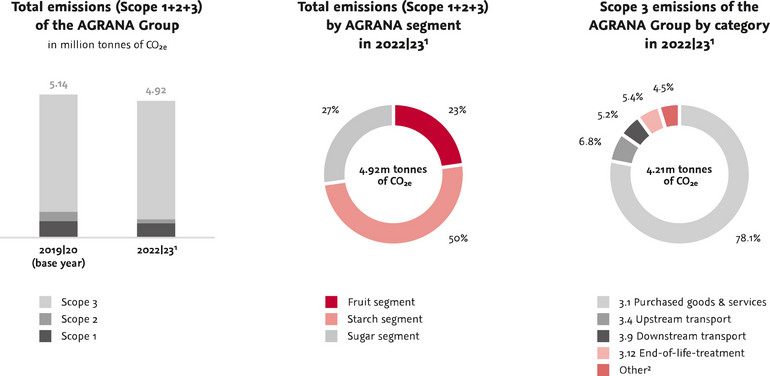1 For time reasons, the values shown for 2022|23 (except those for fruit preparations) were primarily calculated using factors based on the processing quantities of the most important agricultural raw materials.
2 Total of 3.2 Capital goods, 3.6 Business travel, 3.5 Waste, 3.8 Upstream leased assets (primarily storage space, offices) and 3.7 Employee commuting.
